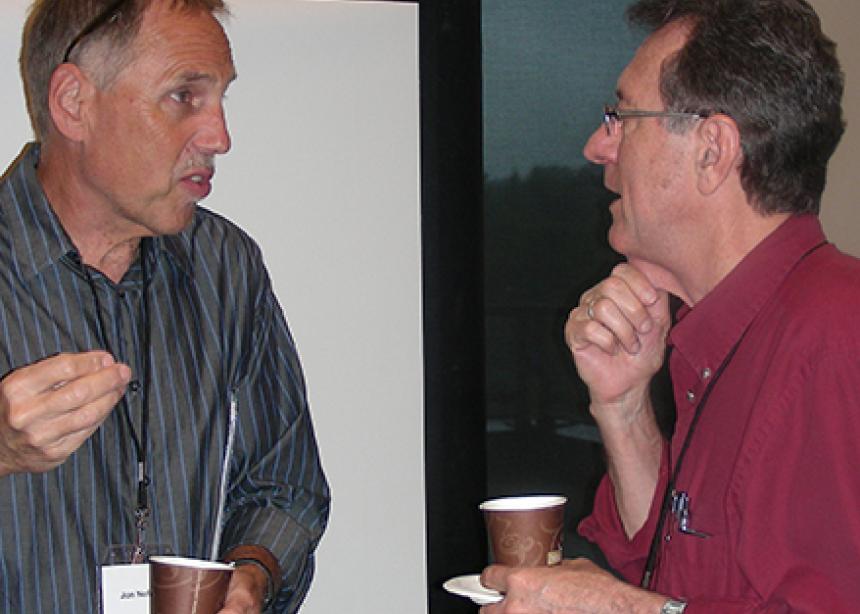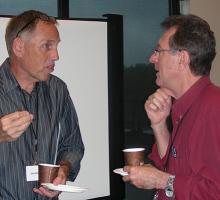Creating more dialogue between the 16th-century Anabaptist tradition and the context of the Global South, and learning about how Mennonite women “do” theology, were two of the keynote addresses at this year’s “Anabaptist theology: Methods and practices” conference, held in early June 2017 at Trinity Western University (TWU) in Langley.
The “Toward a more global Anabaptist/Mennonite theology” session addressed the idea that, while the Anabaptist Mennonite church is becoming more intercultural, theological education is still primarily centred in the western perspective. Presenter Hyung Jin Kim Sun of Emmanuel College at the University of Toronto argued for creating more academic dialogue between the 16th-century Anabaptist tradition and the context of the Global South through a cycle of constant questioning, the communicative process, scriptural tradition, new interpretations, and the connection through heaven and earth linked to the Holy Spirit.
“Anabaptist theology has always taken the form of discernment of the body,” he said.
Carol Penner, an assistant professor of practical theology at Conrad Grebel University College in Waterloo, Ont., presented a paper on the 25-year history of “Mennonite Women doing theology” conferences in North America between 1992 and 2016. Focussing not on the ideas presented at these events, but on how they were been planned and carried out, Penner related how each event was totally distinct, with no one questioning whether or not there would be another event.
However, each event had four things in common:
- The belief that worship is theology.
- People of colour were always involved.
- The belief that theology wasn’t just for academics, thus the mixing of those in academia with laypeople.
- Using formats that foster dialogue and stories, making every voice important.
“That was a tension that existed and still exists,” said Penner. “How do we talk together?”
Noting that four times as many women as men were present at these conferences, she said “a handful” of men had always attended, although none had attended the most recent one.
“Worship and theology must go together,” said Penner. “Worship crystallizes our theology.” She affirmed this by leading those in attendance in prayer to begin her presentation.
The focus of the event, sponsored by the Humanitas Anabaptist-Mennonite Centre at TWU and the Toronto Mennonite Theological Centre, was to encourage scholarship and engage in conversation on theological methods in general and the Anabaptist Mennonite theological method specifically. Scripture, reason, experience and tradition were identified as common sources in constructing theological identity.
Plenary sessions and panel discussions included topics of tradition in a de-traditionalized society, Mennonite theology and literature, and refiguring tradition.
—Corrected July 11, 2017




Add new comment
Canadian Mennonite invites comments and encourages constructive discussion about our content. Actual full names (first and last) are required. Comments are moderated and may be edited. They will not appear online until approved and will be posted during business hours. Some comments may be reproduced in print.